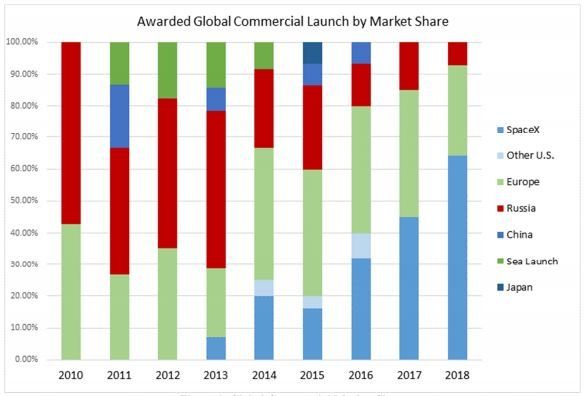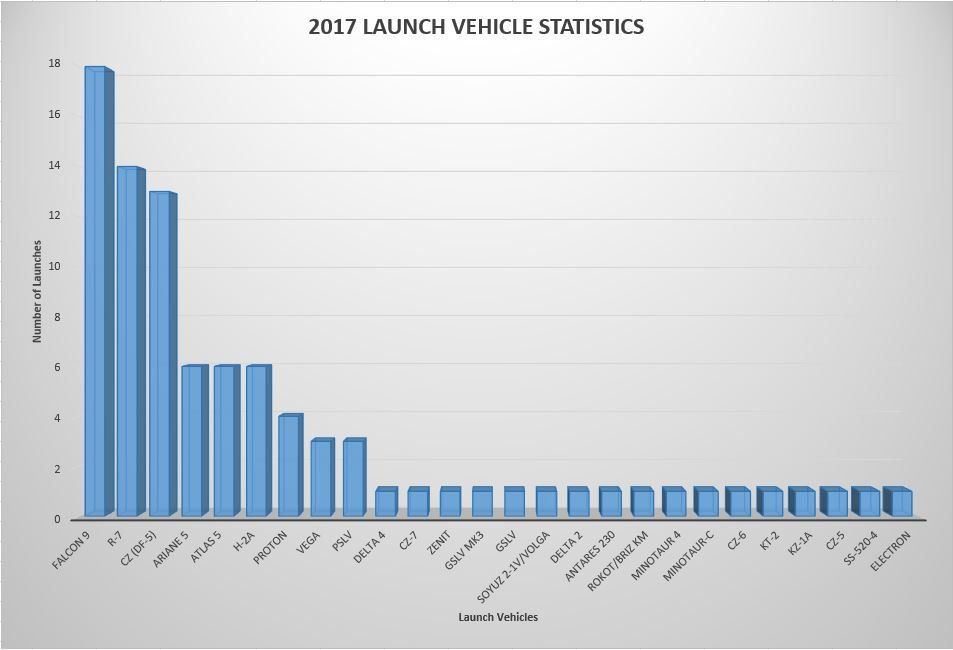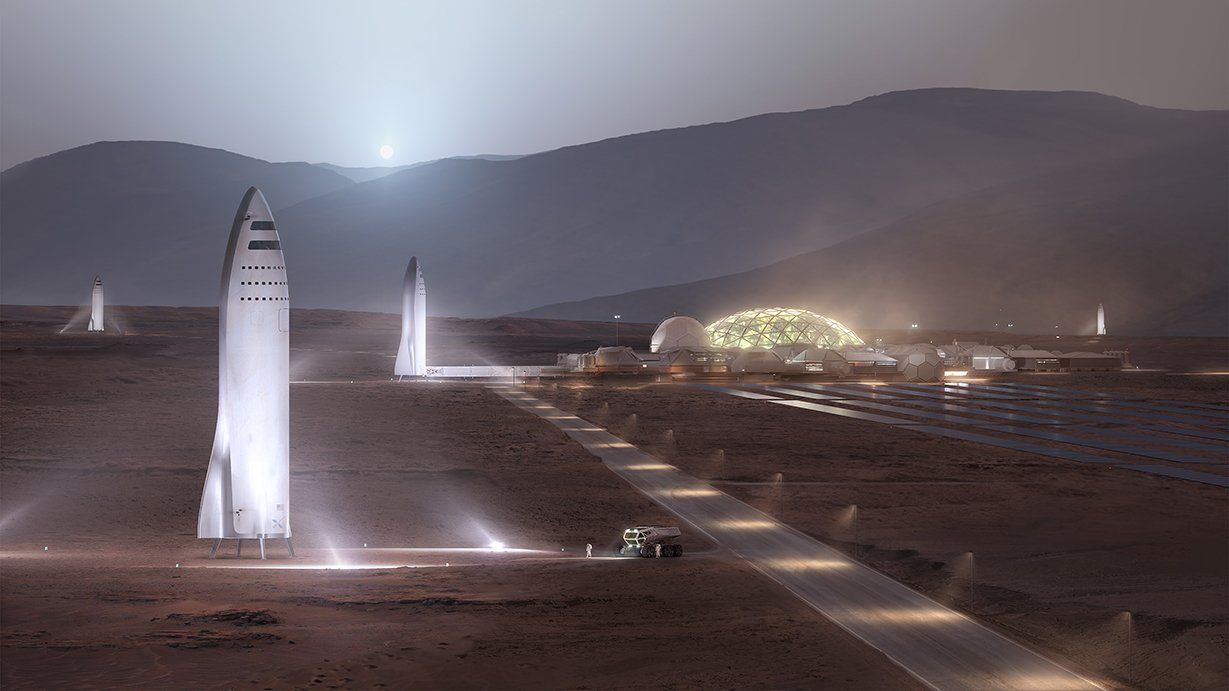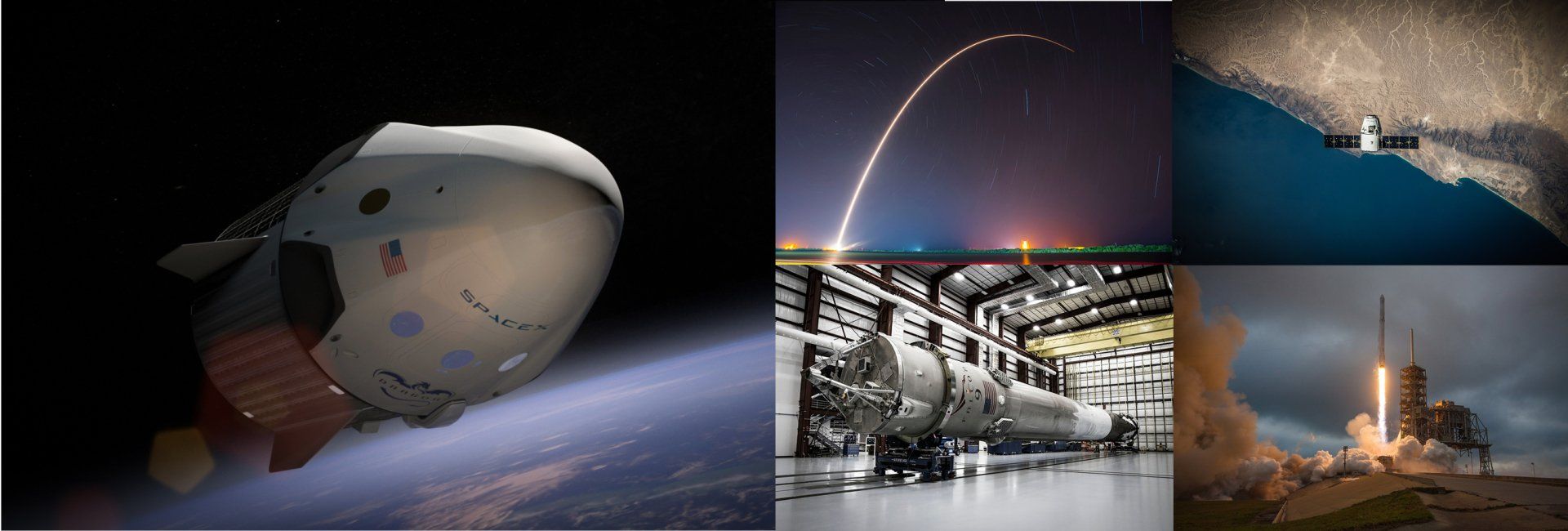Beta Solutions Blog
Five SpaceX Insights for Startups
Date: Jan 30, 2018
Author: Terry Southern, CEO
Perhaps you identify with being an entrepreneur? Maybe you already own or manage a startup business, or have an interest in them? This blog takes a high-level look at five key traits which have enabled SpaceX to “concur the Startup”.
Space Exploration Technologies Corp, trading as the more well-known and hip-sounding name “SpaceX”, is a privately owned American aerospace company. Not one to miss an opportunity to grab a headline and wow the media (much in the same way as Apple Inc does), there is a high probability you have already heard of SpaceX - along with its billionaire founder and CEO Mr Elon Musk. In fact, the story of Musk and SpaceX are so inextricably linked that this blog sometimes uses the two names interchangeably.
Founded in 2002, SpaceX is a relatively new player to the space transport business, and yet despite what is a highly entrenched industry, SpaceX has recently achieved remarkable success. In the process, they have fended off some traditional aerospace juggernauts such as Lockheed Martin and Boeing (collectively known as the United Launch Alliance “ULA”), making their achievements all the more impressive.
SpaceX’s achievements to date include:
- The first privately funded company to:
- Place a liquid-propellant rocket into orbit (Falcon 1 in 2008);
- Successfully launch, orbit, and recover a spacecraft (Dragon in 2010); and
- Send a spacecraft to the International Space Station (ISS) (Dragon in 2012).
- Additionally, they were also the first company outright to achieve a propulsive landing for an orbital rocket (Falcon 9 in 2015);
- The first to reuse an orbital rocket (Falcon 9 in 2017);
- They have also been awarded a contract by NASA to send astronauts to the ISS (in their proposed Dragon 2 capsule) and return them safely to earth.
These achievements undeniably indicate that (despite the long odds) SpaceX has now successfully made the transition from being a fledgling business startup into a full space-launch-provider commercial enterprise. Refer to the graph below which shows the impressive growth of SpaceX’s market share.
Figure 1: Global Commercial Market Share
Below follows the five key traits this blog identifies as having enabled SpaceX to become a successful Startup:
1: Timing Is Everything
As the saying goes, “timing is everything”. Simply put, one of the reasons SpaceX has been successful is because (all things considered - technical, political etc) the timing was right. To give some further context read on:
Since shortly after the end of WWII, the US Government started investing enormous amounts of money into their Aerospace program. In doing so, without a doubt the USA became the #1 leading Aerospace nation in the world. In 1958 the federal government formed a dedicated executive government branch responsible for their civilian space program and aerospace research known as the: National Aeronautics and Space Administration, or “NASA” for short.
The Government (eg: NASA or the US Airforce) would typically commission a piece of work and then engage 3rd party contractors (such as Boeing, Lockheed Martin, Northrop - Grumman etc) to actually design and build the rockets and spacecraft.
The rate of development and early success of NASA was phenomenal.
- In the 1950s they developed rocket powered planes that could travel at Mach 6 and into the fringes of space; (The X15 is still the world’s fastest manned plane).
- The 1960s saw the Mercury and Gemini Programs - which launched astronauts into orbit, and enabled complex space maneuvers like spacecraft rendezvous and spacewalks.
- In July 1969, under their Apollo Program, they landed a man on the moon. The spacecraft was launched by the mighty Saturn 5 rocket booster - still currently the most powerful rocket that ever flew.
- In the early 1970s they continued to send men to the moon, and then later established their first Space Station called SkyLab.
- The 1980s saw the Space Shuttle, a wonderful but massively costly spacecraft program, which operated until they retired the Orbiters in 2011.
Since the Space Shuttles were retired in 2011, the US has not had their own means to take their own astronauts into orbit. In fact, they pay Russia ~$70M per person to use the rather outdated Soyuz spacecraft to ferry their astronauts to/from the International Space Station.
While NASA is developing a new spacecraft (Orion capsule) and a new colossally-sized Launch Vehicle (called the “Space Launch System (SLS)” - this is still some years away.
Ever since the 1960s, when the crowning glory of landing man on the moon was achieved, NASA’s operating budget and hence rate of development has dropped markedly. Like any government funded agency, they are at the whim of “politics”.
While the appetite for state-funded space exploration was declining, the technology simultaneously continued to advance rapidly. New composite materials & manufacturing techniques, increasing computing power and optimised liquid hydrogen propulsion systems were all becoming available to enable a new breed of spacecraft and launch vehicles. The technology was just waiting for someone to take advantage of it.
The stage was set.
In the early 2000s, Elon Musk saw the timing was right. He seized the opportunity to develop a private Space business - one which was free of direct political influence; one which was disruptive and highly innovative and could leverage the latest emerging technology and also one which was audacious enough to set inspiring long term goals (more on that later).
Had SpaceX been incorporated too early, perhaps the technology would not have been sufficient or perhaps NASA would not have been ready to outsource to novice 3rd party launch providers. Too late to the market and they would have faced the challenge of further competition. Now was the time to strike - and strike they did.
2: Innovation Not Imitation
OK, timing is really important, but perhaps it’s not everything.
When Musk originally had ambitions to send “something” (perhaps a plant or a mouse) to Mars, he didn’t have any rockets. So in 2001, he flew to Russia to try and procure from them some ICBMs (repurposed missiles). In short, Russia wanted too much money and the negotiations failed.
Undeterred, he realised at that moment that he would not try to imitate others - but rather Musk turned to his colleague Jim Cantrell and said simply “I think we can build a rocket ourselves”.
Traditionally, the cost to launch medium-size military payloads into orbit has been extremely high. NB: It’s a complex number to unpack but the US Government accountability office has calculated that the average cost of each ULA rocket launch for the US government has risen now to approximately US$422 million1.
Part of the reason of the high cost is that rockets are used only once and then discarded. It was obvious to Musk from the outset that until the cost per launch be drastically reduced - the Space industry would be forever hamstrung.
What was needed, was to bring the cost of a launch down considerably. To do this, they adopted the following innovative approaches:
1. Reuse the rocket:
Instead of letting the first stage rocket booster consume all its fuel during launch and then letting it crash down into the ocean - rendering it useless after a single use, SpaceX has designed a reusable rocket. Essentially, they keep some fuel in the tank and use precision electronic guidance and control systems to vertically fly the rocket back down to earth, firing the rocket engine just the right time/amount to enable a soft landing.
Once the rocket booster has been refurbished, it is ready to fly again, saving considerable costs.
2.
Launch often:
SpaceX charge their customers considerably lower fees than their competitors, resulting in less profit per launch. The only way then to make enough money as a business is to launch more often.
In 2017 SpaceX (using their Falcon 9 Rocket) performed more launches than any other launch provider.
Figure 2: Satellites launched in 2017.
SpaceX’s innovation in both their technical and business departments have allowed them to charge the US Government only $90M per launch (and $60M for commercial customers), which is a far cry from the ~$420M per launch that its competitors charge.
As per Elon Musk “Fundamentally, if you don’t have a compelling product at a compelling price, you don’t have a great company.”
Not only have these innovations greatly assisted them in becoming successful - they will likely forever change the way the Space Launch Industry operates.
3: Hard Working Team
Yes, you read this title correctly - three key words: “hard” and “work” and “team”.
Musk believes in working hard and long. Personally he works 80-100 hours per week and has been doing that week-in week-out for years. To quote Musk: “Work hard every waking hour. If you do simple math, like somebody else is working 50 hours, and you’re working 100, you’ll get twice as much done in the course of a year as the other person.”
Yet SpaceX is more than just one person. SpaceX now consists of a team of 7000+ highly intelligent employees working perhaps 55-70+ hour weeks. In a recent survey2 SpaceX was listed as the most stressful (and one of the lower paying) places to work. However, it was also considered the most meaningful place to work.
Perhaps there are at least three reasons why SpaceX requires their team to work hard:
- Liability:
Firstly, designing and building large Rockets is inherently hard. As well as being complex machines, they are also considered “critical systems”. If they blow up (which they tend to do if everything is not perfect), they pretty-much vapourise everything on board - including cargo and the lives of any souls on board. Given this liability, it is not acceptable for any staff to adopt a “she’ll be right” attitude. - Competition:
Secondly, how do you compete with existing aerospace competitors such as Boeing, who have existed / have over 100 years of experience in the industry? The simple answer is that you beat them by being better - by being innovative and disruptive. However, such innovation doesn’t happen overnight and requires long hours undertaking research and development - including systems development, prototyping, testing, optimising and more testing.
(NB: Incidentally, the “test phase” accounted for as much as 50% of the entire Saturn rocket program - in terms of allotted man-hours and physical resource (Bilstein, p.184.)). - Time is money:
Thirdly, and rather obviously, developing Rockets is an expensive game. Musk invested almost his entire fortune ($160M from when eBay purchased PayPal) into SpaceX (and Tesla Motors). As in any business, generally the longer it takes to commercialise a product, the more investment it will take, and the longer it will be before you start receiving a return on investment.
The first three SpaceX rockets exploded, and the company reached a point where it could barely make its payroll. In fact, they only had enough money for one more launch attempt, which (thankfully) was successful. Profitable NASA launch sub-contracts ensued.
As an aside, it is interesting that new research seems to suggest that working excessive hours often doesn’t make you more productive3. However, long hours is Musk’s style and this is unlikely to change anytime soon. Long hours or not, should SpaceX staff have taken a laid-back attitude, it is almost certain that the company wouldn’t exist today let alone be successful.
4: Unifying Company Goal
So why would anybody want to work at SpaceX? Sure, designing and building rockets sounds like a lot of fun - but why on earth would anyone want to endure the copious work hours, continual state of stress and enormous responsibility of launching ridiculously expensive cargo (let alone human beings)?
The answer in part, is that when you work for SpaceX, you are working for a bigger purpose - something not of this earth. Namely, Elon has set a very clear unifying goal for the the company:
Reducing space transportation costs and enabling the colonization of Mars.
Musk believes that humans absolutely must begin to colonise other planets - or risk becoming extinct in the near or far future. The only planet that is (somewhat) viable for colonisation in our Solar System is Mars, and he is highly critical of the fact that in the last ~40 years nobody (NASA or otherwise) has been bold enough to attempt to venture humans beyond the orbit of the moon.
Figure 3. SpaceX has a very clear objective to enable the colonization of Mars.
As a continual reminder to all of their staff and visitors, hanging on a wall of SpaceX’s headquarters in California, are two giant posters of Mars. One, as the barren planet exists today, and the other showing Mars a transformed planet with green landmasses and blue oceans (Vance, 2015, p.4).
It’s a long term goal, it’s a costly goal, it’s an audacious goal, but it’s also a unifying and motivating goal - one which makes clear to each and every staff member why they are ultimately turning up to work every day.
5: Risk Big
Finally, SpaceX (or should I say Musk?), have been willing to take big risks in order to be successful. They continue to do so.
Yes, the timing was right; Yes, Musk and his team of excellent workers were willing to work hard and implement highly innovative solutions and Yes, they also had a unifying company goal - but while all of these traits are important, the entire venture is still fraught with considerable risk. Consider the following:
- Financial risk -
What if their initial launch #4 was a failure? SpaceX would have simply run out of cash and vanished into oblivion.
- Technical risk -
What if the whole concept of reusing a rocket booster was fundamentally technically flawed?
- Political risk -
What if the Government (NASA) chose to not subcontract to new launch provider entrants, thereby leaving no early adopters to continue to fund their operation.
- Social risk - What if nobody buys into their vision of colonising Mars and SpaceX thereby losing their unifying company Goal, and perhaps many stakeholders in the process?
There have probably been thousands of “what ifs” that SpaceX and Musk have had to consider since 2002. NB: Before Elon founded the company, apparently all his friends tried to talk him out of it - citing that he was likely to lose his entire multi-million dollar fortune. (They were almost right).
However, risk-big he did and risk-big he continues to do.
In all likelihood, SpaceX would have failed long ago, under the hypothetical leadership of most human beings. Many leaders would been crippled with fear at the magnitude of the risks in front of them - and likely shut the entire operation down. But Musk stood fast and continued to unabatedly believe in his company in the value of his product, and that success would ultimately follow.
Of course, it’s possible that all it will take is a few failed launches (especially if those launches involves astronauts) to end SpaceX. It’s the nature of their industry. They’re aware of this potential risk but instead of being crippled, they continue to be entrepreneurial and forge ahead toward their company goal.
Conclusion
Having read the article, hopefully you have gained some useful startup insights from a company that has “been there, done that”. That is not to say you have to personally agree with or adopt these traits, nor does it mean that if you do - success will be 100% guaranteed.
Nevertheless, it’s almost always invaluable to learn from the insights of others, and to take time to consider to what extent you identify with them.
Questions for the entrepreneur or business start up manager :
- How innovative do you consider your business (or potential business) to be?
- How hard are you and your team willing to work?
- How confident are you in the timing of your product or service into the market.
- Do you have a unifying company goal?
- Finally, what is your appetite for risk?
Beta Solutions are privileged to work with both startups and established enterprises. If you have a business idea in mind that requires product development, get in touch with us today and we would be more than happy to bounce some ideas around and share with you our own insights.
References
- Figure 1. Global Commercial Launch by Market, retrieved from https://www.hq.nasa.gov/legislative/hearings/7-13-17%20HUGHES.pdf
- Figure 2. Satellites launched in 2017. Data retrieved from http://spacelaunchreport.com/log2017.html
- Superscript 1. Department of Defense Fiscal Year (FY) 2018 Budget Estimates, May 2017 (p. 109). Retrieved from http://www.saffm.hq.af.mil/Portals/84/documents/Air%20Force%20Space%20Procurement%20FY18.pdf?ver=2017-
- Superscript 2. Retrieved from https://electrek.co/2016/03/07/tesla-and-spacex-standout-in-tech-employee-survey-for-the-most-stressful-and-lowest-paying-jobs-but-also-most-meaningful/
- Superscript 3. Retrieved from http://ftp.iza.org/dp8129.pdf
- Image https://www.inverse.com/article/17723-spacex-mars-elon-musk-2025-colony-mission
- Bilstein, R.E. Stages to Saturn, (p. 184).
- Vance, A. (2015). Elon Musk. (p. 4). London, UK: Penguin Random House UK.
- SpaceX images retrieved from http://www.spacex.com/galleries











